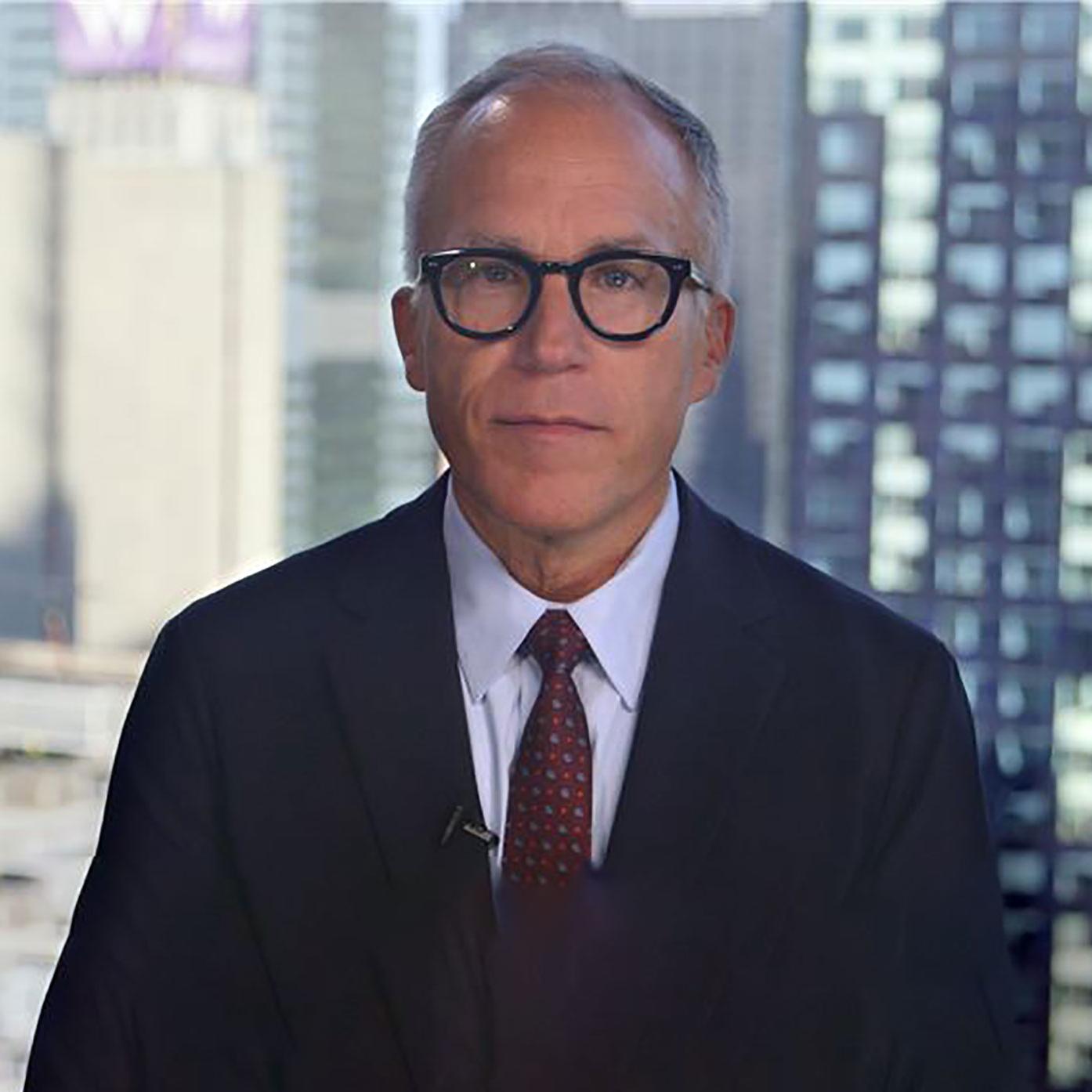
FOMC Policy Announcement and SEP — A Dash of Hawkishness
- Courriel
-
Signet
-
Imprimer
Disponible en anglais seulement
Today’s Fed policy pronouncements took a couple less accommodative turns but still maintained an overall very accommodative stance.
In the statement, there were no changes to the fed funds target range, the pace of asset purchases, or to forward guidance. On the latter, the 0%-to-0.25% range will be kept until maximum employment is attained and inflation has been tracking “moderately” above 2% “for some time”. And, monthly purchases of at least $80 billion Treasuries and $40 billion MBS will continue until “substantial further progress” toward the employment and inflation goals has been made. In the press conference, Chair Powell indicated that the latter standard was "still a ways off" and tapering talk will unfold over coming confabs beginning next meeting.
Elsewhere in the statement, it was again noted that the economy and employment "have strengthened" owing to more progress on vaccinations and strong policy support, and that inflation has accelerated “largely reflecting transitory factors”. No changes here.
In the FOMC’s Summary of Economic Projections (SEP), the median forecast for the fed funds rate was lifted to now reflect two 25 bp rate hikes from none in the March SEP. Among the 18 policymakers, 13 penciled in at least one rate rise by the end of 2023, up from 7 in March. And, although the median remained the same in 2022, there are now 7 individual forecasts of rate hikes, up from 5 before (now just 2 participants short of turning the median dial here as well).
Elsewhere in the SEP, the median real GDP growth forecast was raised to 7.0% in 2021 (up 0.5 ppts), 3.3% in 2022 and 2.4% in 2023 (up 0.2 ppts). And, the median jobless rate projection was lowered just a bit, to 4.5% in 2021, 3.8% in 2022 (down a tenth) and 3.5% in 2023.
Interestingly, in the wake recent acceleration of inflation, the median forecasts for total and core PCE inflation were raised, but only meaningfully for 2021. The headline inflation call is 3.4% in 2021 (up 1.0 ppt), 2.1% in 2022 (up 0.1 ppts) and 2.2% in 2023 (up 0.1 ppts). Core inflation is 3.0% in 2021 (up 0.8 ppts), 2.1% in 2022 (up 0.1 ppts) and 2.2% in 2023. This upgrade now seems to satisfy moderately-above-2%-for-some-time prerequisite for the majority of participants. Further, for core inflation in 2022, no individual forecast (among the 18) is above 2.5% and all run in the 2.0%-to-2.3% range for 2023. In other words, there is a high degree of conviction in the transitory narrative.
Finally, to address persistent downward pressure on overnight money market rates, the FOMC raised the overnight reverse repo rate (ON RRP) by 5 bps to 0.05% and the same for the interest rate on excess reserves (IOER) to 0.15%.
Bottom line: The Fed seems to be setting the stage to begin tapering by the end of this year, ending QE by the end of next year, and commencing rate hikes by the end of 2023. In the meantime, even as these events occur, policy will still be very accommodative.

FOMC Policy Announcement and SEP — A Dash of Hawkishness
Économiste en chef délégué et premier directeur général
Michael Gregory est membre de l’équipe responsable de l’analyse de l’économie et des marchés financiers nord-américain…
Michael Gregory est membre de l’équipe responsable de l’analyse de l’économie et des marchés financiers nord-américain…
VOIR LE PROFIL COMPLET-
Temps de lecture
-
Écouter
Arrêter
-
Agrandir | Réduire le texte
Disponible en anglais seulement
Today’s Fed policy pronouncements took a couple less accommodative turns but still maintained an overall very accommodative stance.
In the statement, there were no changes to the fed funds target range, the pace of asset purchases, or to forward guidance. On the latter, the 0%-to-0.25% range will be kept until maximum employment is attained and inflation has been tracking “moderately” above 2% “for some time”. And, monthly purchases of at least $80 billion Treasuries and $40 billion MBS will continue until “substantial further progress” toward the employment and inflation goals has been made. In the press conference, Chair Powell indicated that the latter standard was "still a ways off" and tapering talk will unfold over coming confabs beginning next meeting.
Elsewhere in the statement, it was again noted that the economy and employment "have strengthened" owing to more progress on vaccinations and strong policy support, and that inflation has accelerated “largely reflecting transitory factors”. No changes here.
In the FOMC’s Summary of Economic Projections (SEP), the median forecast for the fed funds rate was lifted to now reflect two 25 bp rate hikes from none in the March SEP. Among the 18 policymakers, 13 penciled in at least one rate rise by the end of 2023, up from 7 in March. And, although the median remained the same in 2022, there are now 7 individual forecasts of rate hikes, up from 5 before (now just 2 participants short of turning the median dial here as well).
Elsewhere in the SEP, the median real GDP growth forecast was raised to 7.0% in 2021 (up 0.5 ppts), 3.3% in 2022 and 2.4% in 2023 (up 0.2 ppts). And, the median jobless rate projection was lowered just a bit, to 4.5% in 2021, 3.8% in 2022 (down a tenth) and 3.5% in 2023.
Interestingly, in the wake recent acceleration of inflation, the median forecasts for total and core PCE inflation were raised, but only meaningfully for 2021. The headline inflation call is 3.4% in 2021 (up 1.0 ppt), 2.1% in 2022 (up 0.1 ppts) and 2.2% in 2023 (up 0.1 ppts). Core inflation is 3.0% in 2021 (up 0.8 ppts), 2.1% in 2022 (up 0.1 ppts) and 2.2% in 2023. This upgrade now seems to satisfy moderately-above-2%-for-some-time prerequisite for the majority of participants. Further, for core inflation in 2022, no individual forecast (among the 18) is above 2.5% and all run in the 2.0%-to-2.3% range for 2023. In other words, there is a high degree of conviction in the transitory narrative.
Finally, to address persistent downward pressure on overnight money market rates, the FOMC raised the overnight reverse repo rate (ON RRP) by 5 bps to 0.05% and the same for the interest rate on excess reserves (IOER) to 0.15%.
Bottom line: The Fed seems to be setting the stage to begin tapering by the end of this year, ending QE by the end of next year, and commencing rate hikes by the end of 2023. In the meantime, even as these events occur, policy will still be very accommodative.
Autre contenu intéressant
IN Tune: The AI + Data Center Build Out: Sustainability Impacts, Second Order Beneficiaries
Le partenariat États-Unis-Canada: perspectives économiques en Amérique du Nord
Perspectives du marché nord-américain : inflation persistante, taux persistants
Alimentation, agriculture, engrais et facteurs ESG – thèmes abordés lors de la 19e conférence annuelle sur les marchés agricoles de BMO : recherche sur les actions de BMO
IN Tune: Food, Ag, Fertilizer, and ESG From BMO’s 19th Annual Farm to Market Conference
IN Tune: Investment Ideas for Climate Change: Discussing the BMO Climate Opportunities Screen
Budget fédéral de 2024 : Hausse de l’impôt sur les gains en capital; quelques pépites pour les entrepreneurs
Attracting More Generalist Investors in North America to the Oil and Gas Industry
Le sommet inaugural de BMO sur l’obésité est axé sur les thérapies et la lutte contre une épidémie croissante
BMO Blue Book: U.S. Economy is Resilient but Predicted to Slow in Early 2024
The Age of Transparency: Companies Poised to Benefit as Reporting Rules Tighten
Breaking Down the Food Waste Problem: Big Inefficiencies = Big Opportunity
ESG Thoughts of the Week from BMO Equity Research: Wildfire Risk, CAT Losses Increasing

Alimentation, agriculture, engrais et critères ESG lors de la 18e Conférence annuelle sur les marchés agricoles de BMO
Les spécialistes de BMO à notre 18e Conférence annuelle sur les marchés agricoles
BMO Equity Research Hosts Voluntary Carbon Market Discussion at BNEF
North American Outlook: Incertitude : tout, partout et tout à la fois
La transition énergétique nécessitera la collaboration entre les minières et les utilisateurs finaux
Rapport spécial des Études économiques de BMO : Un trio de facteurs préoccupants
Stratégie de placement nord-américaine : perspectives du marché américain 2023
Meilleurs classements pour l'équipe Macrostratégies, Titres à revenu fixe, devises et marchandises de BMO Marchés des capitaux dans un sondage effectué auprès des clients investisseurs institutionnels
Inflation, taux d’intérêt et économie : que nous réserve l’avenir?
Dépenses budgétaires fédérales : une vaguelette plutôt qu’une vague
EXERCICES 2022 ET 2023 : Mettre de l’ordre dans « ses affaires »
The Market Transition from COVID-19 has Begun: Belski to BMO Metals and Mining Conference
Les changements radicaux causés par le variant Omicron et la pandémie – Mise à jour sur la situation sanitaire et la biopharmaceutique
Le variant Omicron – Perspectives sur la santé et les marchés
Des spécialistes de BMO discutent des résultats des élections canadiennes
IN Tune: Food and Ag Takeaways From the Farm to Market Conference
IN Tune: Commodity Pointers From China's Big Policy Meeting

IN Tune: ESG Performance in the Canadian Real Estate Industry
Perspectives des marchés américain et canadien 2021 – Spécialistes de BMO
Premiers résultats des élections américaines : Ce que nous savons
Sonder les profondeurs de la récession imputable à la COVID-19
Données critiques – Des tests, des tests, et encore plus de tests
Precedents can help us understand this unprecedented crisis
Le pic de la pandémie de COVID-19 en vue grâce aux mesures d’atténuation
Discussion avec le chef de la direction de BMO : Comprendre les conséquences de la COVID-19
Les mesures de relance publiques ralentiront la chute, mais n’empêcheront pas la récession
COVID-19: Reshaping the restaurant industry, today and tomorrow
Contenir la propagation de la COVID-19 – Y a-t-il des raisons d’être optimiste?












